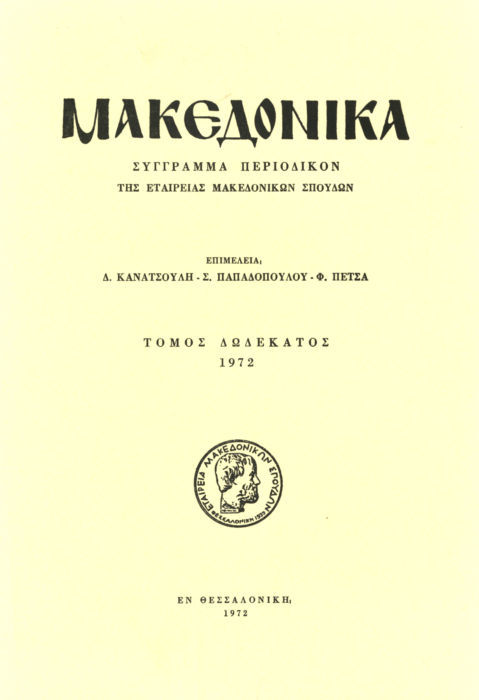Le nouveau tombeau macédonien de Vergina
Abstract
Il s’agit d'un tombeau macédonien à Vergina, qui a été trouvé en 1969. La chambre funéraire a les dimensions de 3x3x3,5m. L’interieure du tombeau représente une imitation en couleur d’une construction en marbre. Quoique le tombeau fut piller, nous avons trouvé beaucoup des objets: 4 amphores, 1 oinochoe, 6 petites scyphoi, 6 marmites, 6 unguentaria, 3 pyxides, 2 boucles d’oreille en or, 1 épingle illyrique en or, 1 bague en bronze, des restes d’une coronne de myrte en bronze, des restes d’une guirlande en terre cuite, quelques perles en terre cuite, 1 spatule d’argent, 1 épingle en bronze, un grand nombre des clous en fer, de fragments d'une pointe de lance en fer, 1 poignée en fer, 1 striglie en fer, 1 belier en terre cuite, 3 lampes, 1 base de calcaire pour une stele et 4 monnaies en bronze.
L’architecture et les objets trouvés indiquent une date le milieu du Ile siècle av. J.C.
Ce tombeau peut être classé dans la catégorie des tombeaux macédoniens le plus souvent rencontrés: une chambre funéraire avec des dimensions à peu près 3x3 m. On peut dire que ce type du tombeau provient d'un arrangement des lits funéraires en forme d'un Γ.
Article Details
- How to Cite
-
Παντερμαλής Δ. (1972). Le nouveau tombeau macédonien de Vergina. Makedonika, 12, 147–182. https://doi.org/10.12681/makedonika.1003
- Section
- Articles

This work is licensed under a Creative Commons Attribution-NonCommercial-ShareAlike 4.0 International License.
Authors who publish with this journal agree to the following terms:
- Authors retain copyright and grant the journal right of first publication with the work simultaneously licensed under a Creative Commons Attribution Non-Commercial License that allows others to share the work with an acknowledgement of the work's authorship and initial publication in this journal.
- Authors are able to enter into separate, additional contractual arrangements for the non-exclusive distribution of the journal's published version of the work (e.g. post it to an institutional repository or publish it in a book), with an acknowledgement of its initial publication in this journal.
- Authors are permitted and encouraged to post their work online (preferably in institutional repositories or on their website) prior to and during the submission process, as it can lead to productive exchanges, as well as earlier and greater citation of published work (See The Effect of Open Access).



